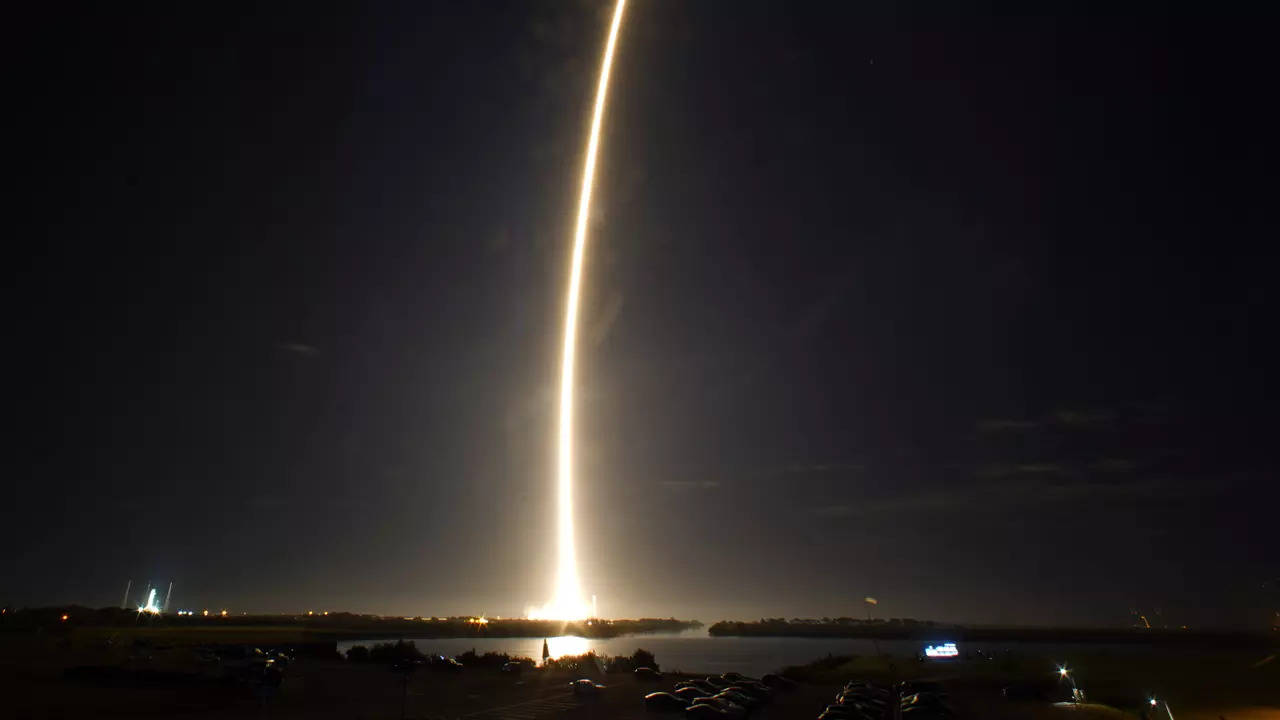NEW DELHI: In America’s first quest to land on moon in over 25 years, a lunar lander designed by Houston-based aerospace company Intuitive Machines was launched successfully from Florida early on Thursday.
Nova-C lander, dubbed Odysseus, lifted off shortly after 1am EST (0600 GMT) atop a Falcon 9 rocket flown by Elon Musk’ SpaceX from Nasa’s Kennedy Space Center in Cape Canaveral.
Mission objective
The mission, “1M-1”, is hoping to be the first non-government attempt at achieving a soft touchdown on Moon. It also aims to land the first US robot on the lunar surface since the Apollo missions more than five decades ago.
Lift off
IM-1 was initially supposed to blast off on Wednesday, but the launch was postponed after SpaceX discovered abnormal temperatures as it attempted to fuel up the lander. The hexagonal-shaped lander “Odysseus” blasted off on top of SpaceX Falcon 9 rocket on Thursday.
What’s aboard
NASA paid Intuitive Machines $118 million to ship science hardware to better understand and mitigate environmental risks for astronauts, who are slated to land on moon in 2026. There is more colorful cargo aboard as well, including a digital archive of human knowledge and 125 mini-sculptures of the Moon by the artist Jeff Koons. After touchdown, the payloads are expected to run for roughly seven days before lunar night sets in on the south pole, rendering Odysseus inoperable.
When’s D-Day?
Despite a day’s delay, the spacecraft is expected to reach its landing site “Malapert A” on February 22. It’s an impact crater 300 kilometers (180 miles) from the south pole. The lander has a new type of supercooled liquid methane and oxygen engine giving it the power to reach its destination quickly, avoiding prolonged exposure to a region of high radiation surrounding the Earth known as the Van Allen belt.
Space race
The launch is historic for America as it will mark the beginning of a journey to Moon under Nasa’s Artemis programme. US is racing to return astronauts to Earth’s natural satellite before China lands its own crewed spacecraft there. Both countries are planning a series of missions, turning the celestial body into a new frontier of space dominance, decades after the Cold War-era race between USSR and US.
Others not far behind
Last month, Nasa said it will launch a first crewed Artemis moon landing in late 2026, while China has said it was aiming for 2030. But other countries are also shooting for the Moon. Last month, Japan became the fifth country to place a lander on the moon, with its space agency JAXA achieving an unusually precise “pinpoint” touchdown of its SLIM probe last month. In 2023, India became the fourth nation to land on the moon, and first to land on the south pole with the success of Chandrayaan-3 mission.
(With inputs from agencies)
Nova-C lander, dubbed Odysseus, lifted off shortly after 1am EST (0600 GMT) atop a Falcon 9 rocket flown by Elon Musk’ SpaceX from Nasa’s Kennedy Space Center in Cape Canaveral.
Mission objective
The mission, “1M-1”, is hoping to be the first non-government attempt at achieving a soft touchdown on Moon. It also aims to land the first US robot on the lunar surface since the Apollo missions more than five decades ago.
Lift off
IM-1 was initially supposed to blast off on Wednesday, but the launch was postponed after SpaceX discovered abnormal temperatures as it attempted to fuel up the lander. The hexagonal-shaped lander “Odysseus” blasted off on top of SpaceX Falcon 9 rocket on Thursday.
What’s aboard
NASA paid Intuitive Machines $118 million to ship science hardware to better understand and mitigate environmental risks for astronauts, who are slated to land on moon in 2026. There is more colorful cargo aboard as well, including a digital archive of human knowledge and 125 mini-sculptures of the Moon by the artist Jeff Koons. After touchdown, the payloads are expected to run for roughly seven days before lunar night sets in on the south pole, rendering Odysseus inoperable.
When’s D-Day?
Despite a day’s delay, the spacecraft is expected to reach its landing site “Malapert A” on February 22. It’s an impact crater 300 kilometers (180 miles) from the south pole. The lander has a new type of supercooled liquid methane and oxygen engine giving it the power to reach its destination quickly, avoiding prolonged exposure to a region of high radiation surrounding the Earth known as the Van Allen belt.
Space race
The launch is historic for America as it will mark the beginning of a journey to Moon under Nasa’s Artemis programme. US is racing to return astronauts to Earth’s natural satellite before China lands its own crewed spacecraft there. Both countries are planning a series of missions, turning the celestial body into a new frontier of space dominance, decades after the Cold War-era race between USSR and US.
Others not far behind
Last month, Nasa said it will launch a first crewed Artemis moon landing in late 2026, while China has said it was aiming for 2030. But other countries are also shooting for the Moon. Last month, Japan became the fifth country to place a lander on the moon, with its space agency JAXA achieving an unusually precise “pinpoint” touchdown of its SLIM probe last month. In 2023, India became the fourth nation to land on the moon, and first to land on the south pole with the success of Chandrayaan-3 mission.
(With inputs from agencies)





























